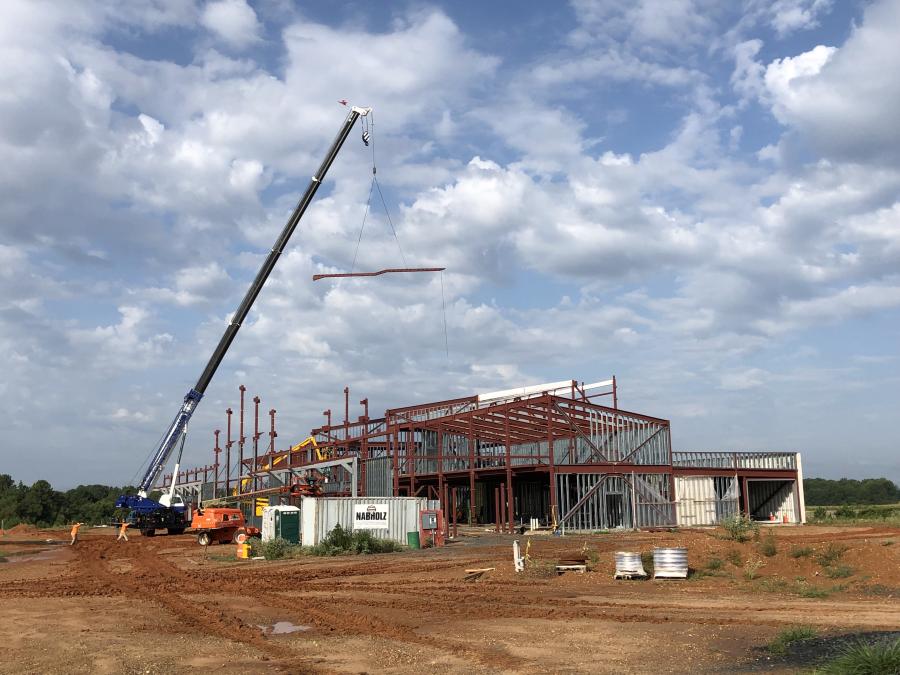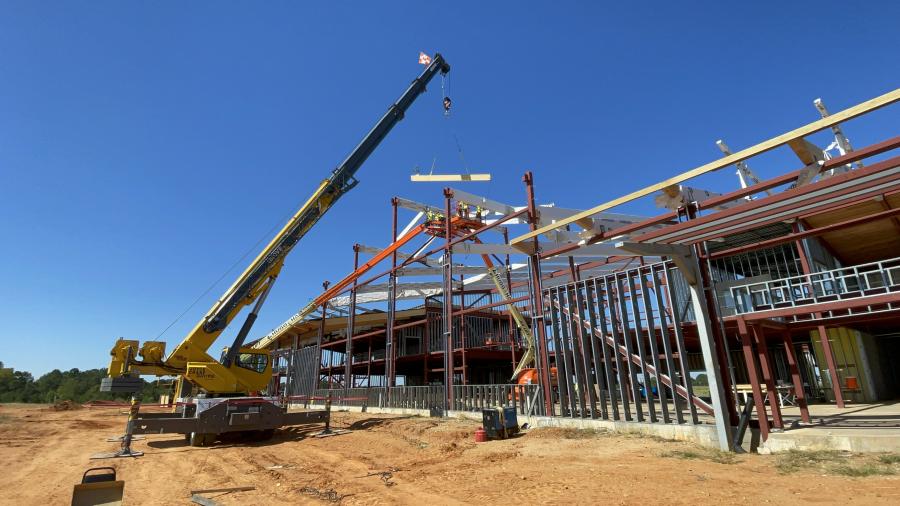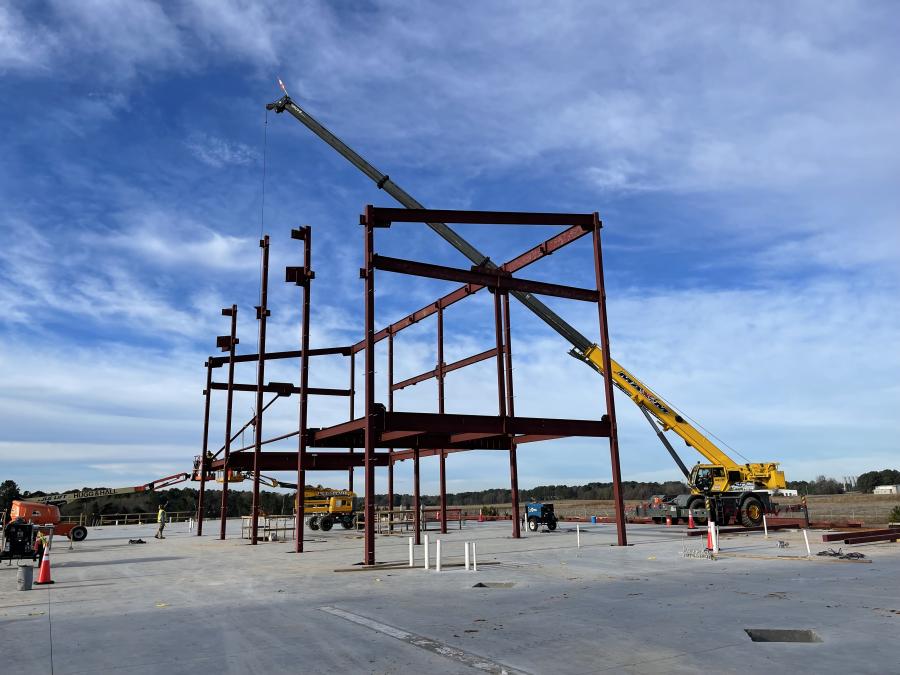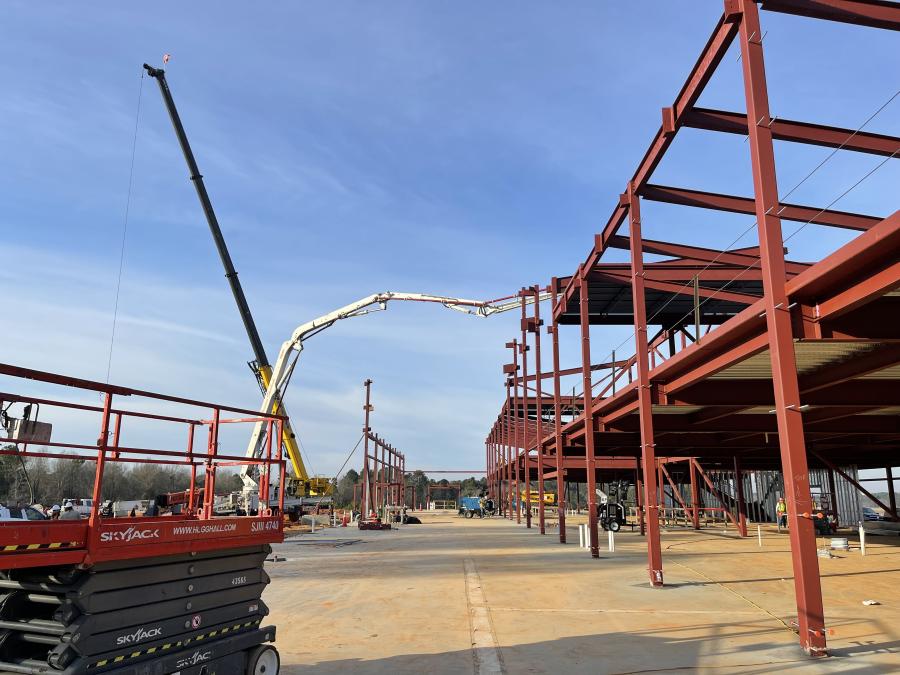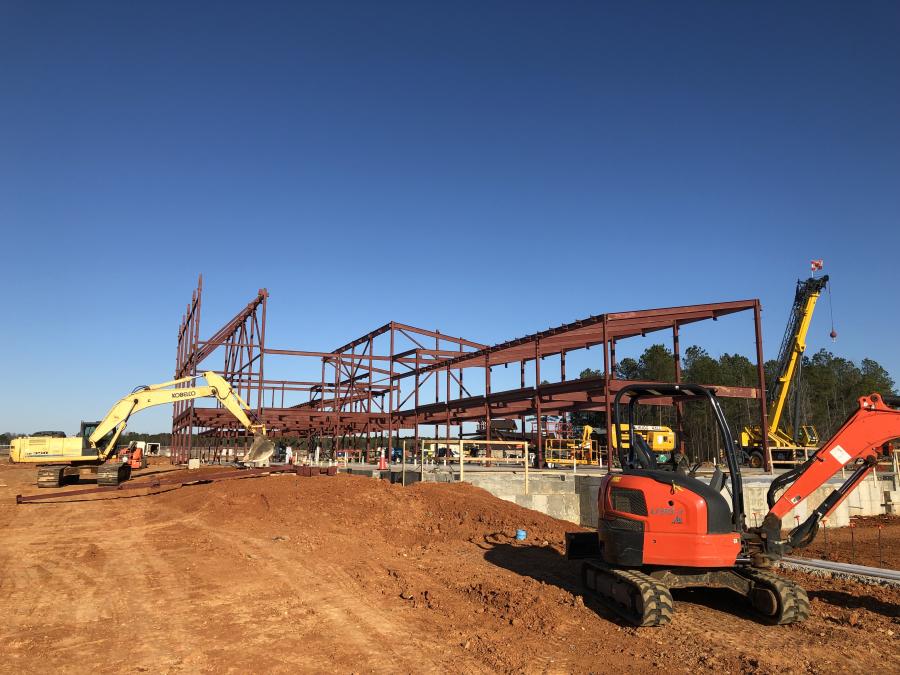The new, two-story terminal at Texarkana Regional Airport is set to encompass 40,500 sq. ft., more than double that of the old facility.
(Texarkana Regional Airport photo)
The news is often filled with stories about large airports working on billion-dollar expansions or renovations, like the ongoing construction to upgrade New York City's LaGuardia Airport, or the never-ending improvements to Hartsfield-Jackson Atlanta International, the world's busiest in terms of passenger traffic.
But there are many smaller, regional airports in the United States needing upgrades that do not attract as much media attention as the major airports. These mid-size facilities, though, are the starting points or final destinations for many Americans traveling to and from the larger metropolitan air terminals.
Despite the fact commuter airports are the backbone of the airline industry, they regularly must fight and scrape to secure funding to keep them running safely and efficiently. Bringing their facilities up to 21st century standards also is critical to keeping the entire system operational.
A perfect example of a regional airport in a small market that has worked hard to fund its own modernization can be found in Texarkana, Ark.
In fact, Texarkana Regional Airport is unique in that it serves a pair of cities, both named Texarkana, in two different states — just across the border from Arkansas is Texarkana, Texas, with a population of about 37,000; its sister community in Arkansas has approximately 30,000 residents. The airport is co-owned by both municipalities.
Airport Desperately Needs Overhaul
Texarkana Regional Airport serves quite a large segment of east Texas and southwest Arkansas. The next closest commercial airport is an hour south in Shreveport, La., while Little Rock, Ark., is two hours to the northeast, and Dallas, Texas, is three hours west.
Due to the rural nature of the two communities, though, Texarkana Regional is the only way into or out of the region by jet passenger plane. That, and the fact its terminal has not seen much in the way of renovation since it was built in 1960, is why the airport's modernization is so important.
That was confirmed by Paul Mehrlich, Texarkana Regional's executive director of aviation. He said that after the current terminal was built 63 years ago, the only other addition was a new baggage carousel in the 1990s.
"The building was aging and was just not meeting the current capacity any longer," he explained. "We looked at whether we should renovate it or construct a new building, and over the course of 16 years we finally concluded that we needed to build a whole new terminal that would include jet bridges. That way, we would enter the modern airport era rather than using stairs for people to board an airplane."
Although most regional and large airports use jet bridges, the enclosed, movable connector tunnels that allow passengers to enter or exit an airplane from a terminal gate, Texarkana Regional still boards passengers from the tarmac to their planes using mobile stairs.
When open to the public, Texarkana Regional will have an advanced baggage system, expansion opportunities for more airlines and destinations, and room for concessions.
"The general thinking is you often do not build the type of buildings out here that are expandable, like the new airport, but with this project, Texarkana Regional can expand up to eight total gates and grow as the community grows," Mehrlich said.
In terms of its design, he said the terminal will primarily be a glass-fronted building with timber supports on the exterior and the roof. Because it is a bi-state-owned airport, Texarkana Regional is being built with masonry stone from Texas, and the terminal's structural glued laminated timber, or glulam, and wood-decking timber is southern pine from Arkansas.
"I can proudly say that we will have the most beautiful airport terminal building in the entire region for years to come," Mehrlich said.
Another key part of the plan was to build the new structure on the opposite side of the airport's single runway at a site about 2,000 ft. from the current building and located off 19th Street to provide easier access to nearby Interstate 49.
"This project is a full replacement for the airport terminal, along with the construction of a new parking lot, and a new apron [tarmac]," Mehrlich said, while adding the terminal will cost $36 million, plus another $13 million to create the parking lot and concrete apron for the planes.
"Part of the reason we designed the expansion was to host Boeing 737 jetliners because our goal is to attract a low-cost air carrier to Texarkana Regional," he continued. "There are a few of them like Frontier Airlines, Breeze Airways, Avello Airlines and Allegiant Air, and we will be approaching them to say, ‘We have these new jet bridges, we have this brand-new terminal, and we can meet the capacity of 150 passengers per aircraft.'"
Mehrlich believes that signing a new air carrier will help open new markets for Texarkana Regional, as the airport currently only flies passengers through SkyWest, American Airlines' commuter service.
Planners Design Four-Phase Effort
Nabholz Construction, headquartered in Conway, Ark., is the prime contractor for the airport construction and upgrades. Its major subs include Tatum Excavating Co. (TEC), of Texarkana, Texas, responsible for the concrete work and mechanical plumbing; Texarkana, Ark.-based Reliance Mechanical Contractors, in charge of the electrical work; and Nabco Mechanical & Electrical, a subsidiary of Nabholz in Conway, is performing the roofing, along with Harness Roofing, based in Harrison, Ark.
The new, two-story terminal at Texarkana Regional Airport is set to encompass 40,500 sq. ft., more than double that of the old facility. The new structure will stand 51-ft.-6 in.-tall and stretch 300-ft.-long. When finished, it will have the capacity to host 703 people.
The expansion project broke ground in June 2021, according to Mehrlich, and he expects it to be finished by the summer of 2024. He felt comfortable in saying the project was right on schedule because the work has been broken down into four phases.
The expansion's initial phase included extensive earthmoving, building aggregate piers, pouring concrete under slabs and installing mechanical plumbing and tongue groove decking.
Phase 2 was slated to be complete by the end of March, and saw crews erect the terminal's structural steel and glulam supports. The contractors also worked to put up the building's framing, metal-frame roofing, metal wall panels and curtain wall glass throughout the entirety of the exterior.
The middle two phases overlapped, so Phase 3 required crews to move into the terminal's interior to work on installing the needed metal framing, drywall, floor tile, carpeting, millwork, painting, electrical and mechanical plumbing. When Phase 4 gets going this summer, he added, work will concentrate on site paving to tie into the new tarmac, install the fencing and, in spring 2024, move in the jet bridges — the final piece in getting the airport finished.
"We plan to have a grand opening by the summer of 2024 but, for us, that date will depend on when those jet bridges arrive," he said. "The manufacturers had to have a 12-month lead time before delivery and, right now, they are scheduled to arrive in December, but if there is any kind of delay, that will back up the terminal's readiness."
Work Demands Heavyweight Earthmovers
Because the new terminal building was being constructed on the east side of the airport runway on raw land, earthmovers were called in to properly grade the site for the structure, the tarmac and the taxiway when work commenced in 2021.
"We first had to build the new taxiway, and it, along with the apron, the roadway leading to the terminal and the parking area, were all done over the first two phases," said Mehrlich. "The taxiway required 250,000 cubic yards of excavation and embankment and saw 46,642 tons of asphalt paving. The apron was built using more than 12,000 cubic yards of concrete, and there are more than 10,000 linear feet of storm drain and box culverts now installed."
Not surprisingly, the heavyweight stars of the work were the construction equipment involved. They included:
- A Cat D6K2 LGP dozer
- Cat D6XE LGP dozer
- John Deere 700K LGP dozer
- Cat 320 excavator
- Cat 326 excavator
- John Deere 250 mid-sized excavator
- Kobelco SK350LC excavator
- Cat RM350 road reclaimer
- Cat 140M2 motor grader
- Cat 420F IT backhoe loader
- Cat 289D3 compact track loader
- Cat 303.5 mini-excavator
- New Holland T9.645 tractor with a K-Tec 1233 scraper
Securing Funds Presents Challenge
Mehrlich said that supply chain issues arising from the pandemic, including getting the glulam structural beams delivered on site when needed, was a challenge — taking nine months longer to reach Texarkana than planned — but cost increases on the project were more problematic.
"We would do our expected pricing, and when we bid out the work, the bids would come back 25 percent over what we thought the costs would be," he said. "We would adjust, but by the next phase, costs were already 25 percent above the earlier number. We did have access to Federal Aviation Administration [FAA] grants for this project, but as those grants went higher, so did the matching funds necessary. Fortunately, COVID relief funds were released to airports that became our insurance policy to keep work moving along."
In addition to the federal government, Texarkana Regional also received matching funds from both Texarkana communities in Arkansas and Texas. Additionally, money and grants have come from the Arkansas Division of Aeronautics and the Texas Department of Transportation (TxDOT).
When construction on the facility started in 2021, Texarkana Regional celebrated 90 years of commercial airline service between American Airlines and the airport, which began operations June 15, 1931, with a single Ford Tri-Motor passenger airplane.
Prior to the pandemic, in 2019, the airport served nearly 40,000 passengers, a record number for the facility. Currently, Texarkana Regional is enjoying a resurgence in passenger totals with COVID less of a threat. CEG
Eric Olson
A writer and contributing editor for CEG since 2008, Eric Olson has worked in the business for more than 40 years.
Olson grew up in the small town of Lenoir, NC in the foothills of the Blue Ridge Mountains, where he began covering sports for the local newspaper at age 18. He continued to do that for several other dailies in the area while in college at Appalachian State University. Following his graduation, he moved on to gain experience at two other publications before becoming a real estate and special features writer and editor at the Winston-Salem Journal for 10 years. Since 1999 he has worked as a corporate media liaison and freelance writer, in addition to his time at CEG.
He and his wife, Tara, have been married for 33 years and are the parents of two grown and successful daughters. His hobbies include collecting history books, watching his beloved Green Bay Packers and caring for his three dogs and one cat.
Read more from Eric Olson here.
Today's top stories



